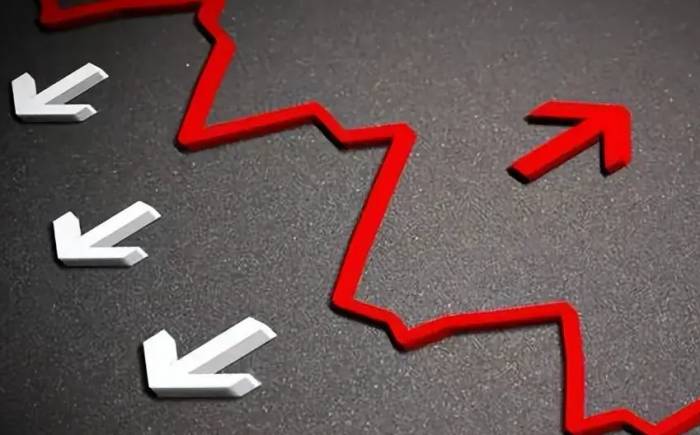The "Broken Windows Theory" was originally proposed by the renowned criminologist Dr. James Q. Wilson and George L. Kelling. This theory posits that if negative phenomena in the environment are allowed to persist over time, they can induce people to imitate such behaviors, and even exacerbate them. The same effect applies in the field of investment and finance; it is precisely because of the "Broken Windows Theory" that inexperienced novices are more likely to make money than traders who have suffered significant losses.
Insights from the Broken Windows Theory in Trading
The Broken Windows Theory actually reveals a psychological inertia among people. Once your account experiences substantial losses, a mentality of "if it's broken, it's broken" can emerge, leading traders to become increasingly irresponsible towards their accounts, operate more carelessly, and ultimately become more deeply entrenched in the path of losses. This also fully confirms the saying, "A small hole not mended will become a large hole."
We often hear complaints like: "As soon as I buy, the price drops; as soon as I sell, the price rises. Why?" The reason may be due to the influence of the "Broken Windows Theory." When the market sends certain signals, it can easily induce trend-following investors to blindly follow the trend and enter the market, even blindly chasing high prices, with results that are always contrary to expectations.
Advertisement
A loss in investment is like a broken piece of glass; the broken glass is a minor issue, but the subsequent continuous damage is a major concern! Therefore, investors should try not to break the "funding window" in trading, learn to take profits and cut losses in a timely manner, set appropriate profit-taking points and stop-loss points, adhere to investment principles, and avoid frequent operations.
Rational View of Trading Losses
According to the Broken Windows Theory, a trader's wrong behavior may gradually be magnified, and the trading mentality may also gradually become unbalanced due to a failure or a serious loss.
For example, a trading novice or an investor who has never suffered a significant loss is often more cautious when trading, and the possibility of making a major mistake is relatively low. However, once they have experienced a substantial loss, if they do not adjust their mentality and trading strategy, they may continue to suffer even more severe losses in subsequent trading. Therefore, traders must maintain a good mentality and rationally view the issue of losses in trading.
In addition, there is another reverse Broken Windows phenomenon in the market, which is also an inducing behavior, and this behavior is more commonly seen in bear markets. In a bear market, the market will send inducing signals, making investors believe that the bear market is about to end, and they start to enter the market continuously, preparing to welcome the arrival of a bull market. In reality, it is a trap, but many investors are unwilling to cut losses, continue to add funds, lose more and add more, until they can no longer bear it.In summary, once a window is broken and left unrepaired, more windows will be broken subsequently. Investors should enhance their financial knowledge, view market fluctuations from the perspective of industry fundamentals, and make correct investment choices based on their actual situation and market conditions to avoid the "Broken Windows Effect."
Do Not Break Your "Capital Window"
The so-called "Capital Window" actually means to try not to let your trading account suffer significant losses. The reason many people get deeper and deeper into the path of losses is that they have broken the "Capital Window." Once your trading incurs a serious loss, do not hesitate, but should resolutely exit the market, and do not think about how to recover the loss. It is best to set a stop-loss point in advance.
If you have a significant loss after a floating profit, your stop-loss point should at least be set above the break-even price, with the purpose of not allowing your already profitable position to become a floating loss and ultimately get deeply trapped. At this time, we may encounter a situation where the price rises again after closing the position at the break-even price. Many people are reluctant to close the position at break-even because they are worried about missing such opportunities.
This concern is normal, but if you want to protect your "Capital Window" from being punctured, you must abandon this idea. The market is the most abundant in opportunities, and for most people, the most lacking is actually capital. At this time, if you use limited capital to gamble on the countless opportunities that will appear next, it is obviously an unwise approach.
Repair the "Capital Window" in Time After It's Broken
In case the "Capital Window" is accidentally broken and the trader suffers a significant loss, the best stop-loss method is to decisively pause operations and not think about holding on to the position until the loss is recovered. Especially in stock market investment, this kind of fluke mentality is more obvious, and many people believe that the stock market decline is only temporary. Due to the absence of leverage, it will make investors more at ease to hold on, waiting for the day to recover the loss. However, there are not a few people who have been deeply trapped for several years.

The correct approach is to temporarily leave the market, identify the root cause of your own mistakes or losses, and adjust your mentality in a timely manner. You must repair the window that has suffered losses at the first time, and not let it develop, and repair as much as the window is broken. Traders must wait until they have repaired that window and adjusted their mentality before they can re-enter the market.
Comment